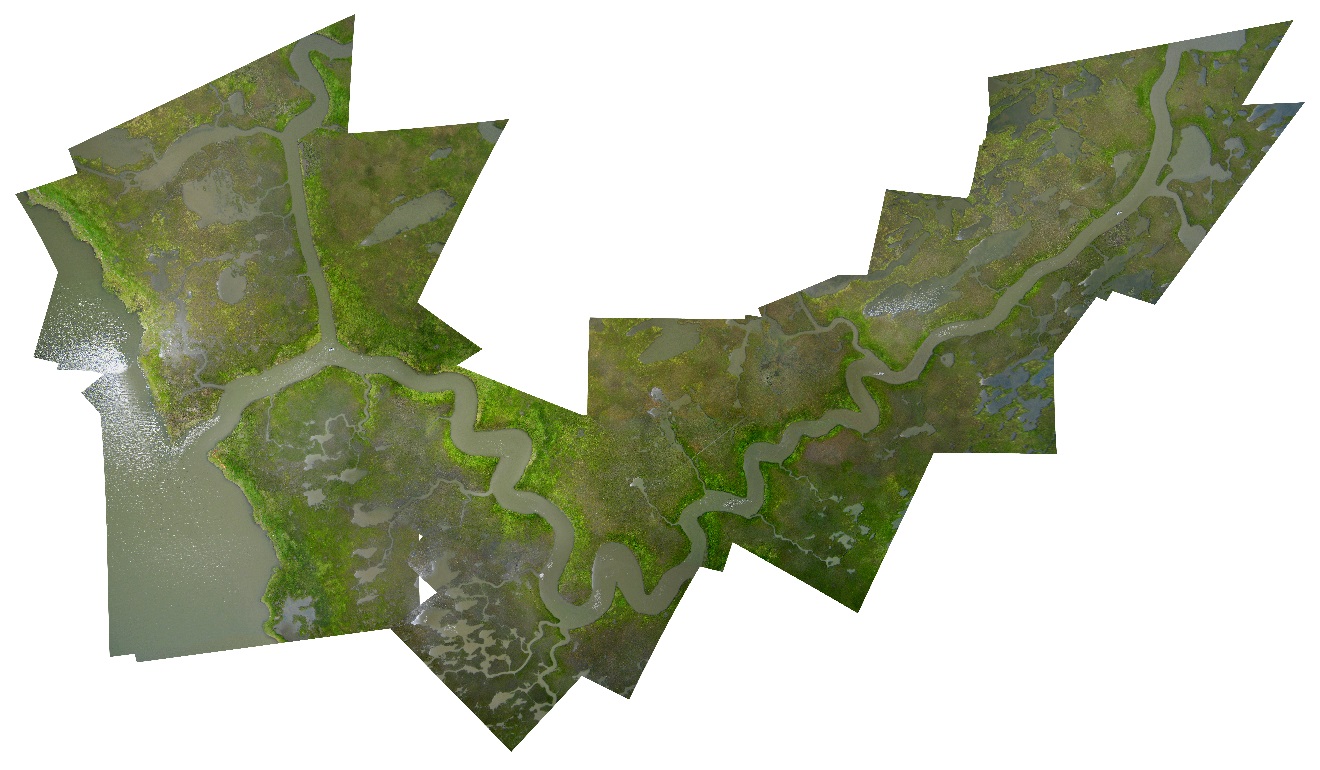
Louisiana wetlands facing contamination by BP oil spill in 2010
The exact instrumental payloads will be determined iteratively through a series of boots–on–the–ground workshops and in consultation with leading scientists. While the balloons will float freely, they will be tethered to the specific desires and needs of communities with whom they share airspace. The Aerocene will become a platform for civic technoscience that pluralizes how and who can make authoritative claims about the environment. The project’s ability to proliferate on the ground–its uptake, reproduction and alteration by diverse winds of human ingenuity beyond the individual hand of the artist—stems from its open hardware methodology. This now brings us back to intellectual property and the infrastructures of knowledge distribution. Sublimating into the Aerocene cannot be done using the same methods and tools that constructed our current hydrocarbon–dependent planet. Placing Aerocene designs in the creative commons, gives rise to a new flow of knowledge, circulation of capital, transparency of research, and idea of property that runs in diametric opposition to those that constitute and dominate the Anthropocene. Open licensing is just one, albeit gigantic, step towards a more just and socially democratized planetary atmosphere. As the Open Source Hardware Statement of Principles outlines, the bottlenecks in making material technologies truly open, easily modifiable, and adaptable to divergent contexts are not limited to licensing: “open source hardware uses readily–available components and materials, standard processes, open infrastructure, unrestricted content, and open-source design tools to maximize the ability of individuals to make and use hardware.”[6]To continue our focus on stratospheric balloons, take Google’s Project Loon as an example. The project involves flying a large number of stratospheric helium balloons across the Southern Hemisphere to broadcast LTE internet connections to otherwise offline communities. Sri Lanka may well achieve universal internet coverage via Loon by the time this newspaper goes to print. The project has tallied some 200 patents, which tech pundits read as a sign of its immanent success. Loon has created their own automated balloon manufacturing facility. Balloons that initially only lasted a few hours in the air now stay aloft in the upper layers of the atmosphere for over a hundred days. But the steps to exponentially increase the life of these balloons remain stuck behind the enclosures of corporate secrecy. Their production process requires specialized machines and vast amounts of capital. Beautifully simple innovations such as Google’s patent #US20140252163 A1, which rotates darker or lighter sides of the balloon towards the sun to increase or decrease elevation and catch winds of different directions, will remain legally out of reach to aspiring aeronauts for the next two decades. Even more troubling is that a similar, if not more advanced, design of this kind was featured in the Journal of the Balloon Federation of America in 1978.[7] Patents can colonize preexisting knowledge not just safeguard hard fought and capitally intensive developments. By contrast, the Aerocene can begin with the open–licensed plans for a tetrahedron solar balloon. The balloon costs $25 in materials–a plastic drop cloth, scissors and an ordinary iron. Its assembly process is meticulously documented, and the design has been freely available on the internet since 2009.[8] To keep our balloons aloft at night we could, when the sun sets, bring very small magnets into contact with magnetotactic bacterium that emit heat when exposed to magnetic fields. If any of our longer term and higher-tech balloons need extra lift during launch to reach the upper stratosphere we can collect helium being emitted from natural thermal springs such as those in Maire de Santenay, some 334 kilometers south of Paris’ Grand Palais, without need for mining. I could go on, but the point here is not to conjecture technical possibilities but to underline the knowledge infrastructures necessary for germinal collective dreaming to take place. Through open development Saraceno multiplies both those who can contribute to the project and who can directly benefit from it. In this way the Aerocene bucks the assumption of industrial capitalism, namely, that the practices and infrastructures that beckoned our present environmental crises can also get us out of it. — Nicholas Shapiro Notes: [1] Cindy Naucler Glickert, “Guarding the ‘Gold’: Protecting Boeing innovations is critical to maintaining a competitive advantage,” Boeing Frontiers (2010): 38-40. [2] Predecessors to helium balloons were no less implicated. The 19th and early 20th centuries balloons were almost universally filled with coal gas, which is a mixture of hydrogen, methane and carbon monoxide. [3] Michelle Murphy Michelle, “Chemical Infrastructures of the St Clair River,” in Toxicants, Health and Regulation Since 1945, ed. Boudia and Jased (Routledge, 2013): 105. [4] Jacob Dlamini, “Native Nostalgia” (Jacana Media, 2009). [5] This last use of high-altitude and low-cost balloons as has been attempted by our colleagues at SkyTruth. http://skytruth.org/updated-skytruthing-the-bakken-field-report/ [6] Open Source Hardware Association “Open Source Hardware (OSHW) Statement of Principles 1.0” http://www.oshwa.org/definition/ [7] Dick Brown, “SUNSTAT: A Balloon that Rides on Sun Beams,” Ballooning: The Journal of the Balloon Federation of America (1987): 5-9. http://www.brisbanehotairballooning.com.au/wp-content/uploads/SunstatArticleinBallooning.pdf [8] First uploaded in 2009 http://www.headfullofair.com/wp-content/uploads/2009/05/thekissballoon2.pdf and updated in 2012 http://publiclab.org/notes/mathew/5-29-2012/solar-hot-air-balloons This balloon building guide was written by my Public Lab collaborator Mathew Lippincott, who provided invaluable research assistance in the preparation of this essay.
